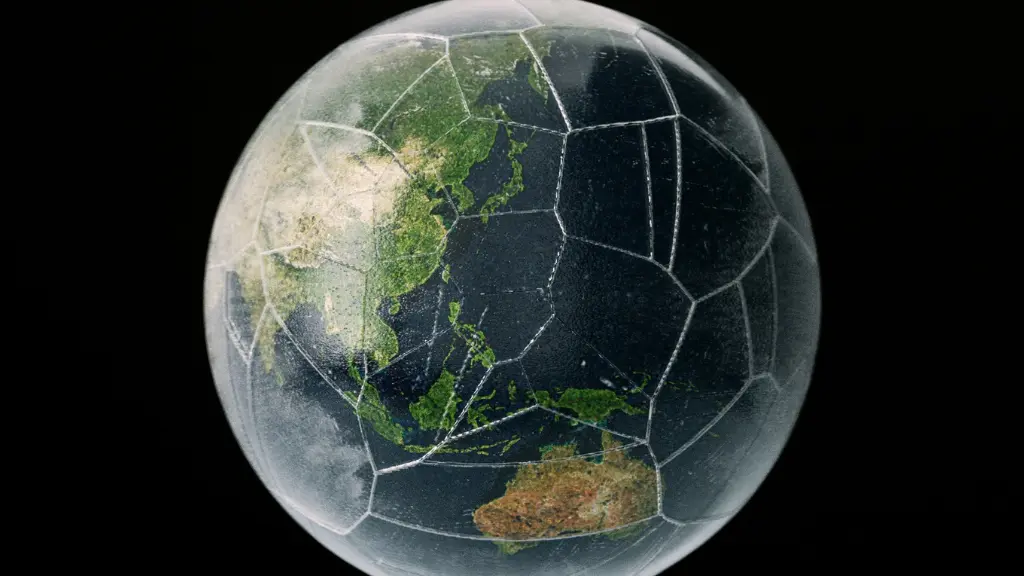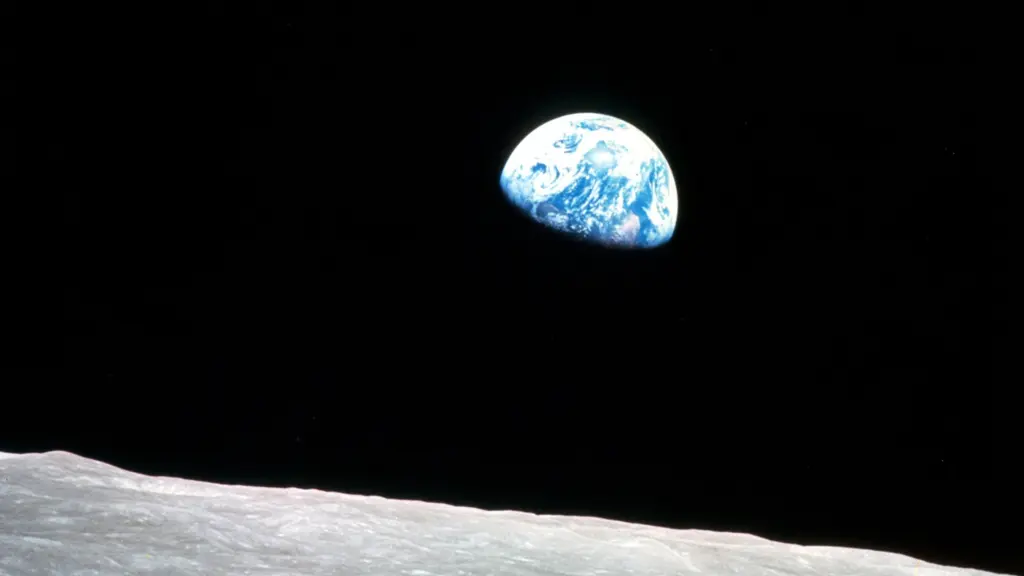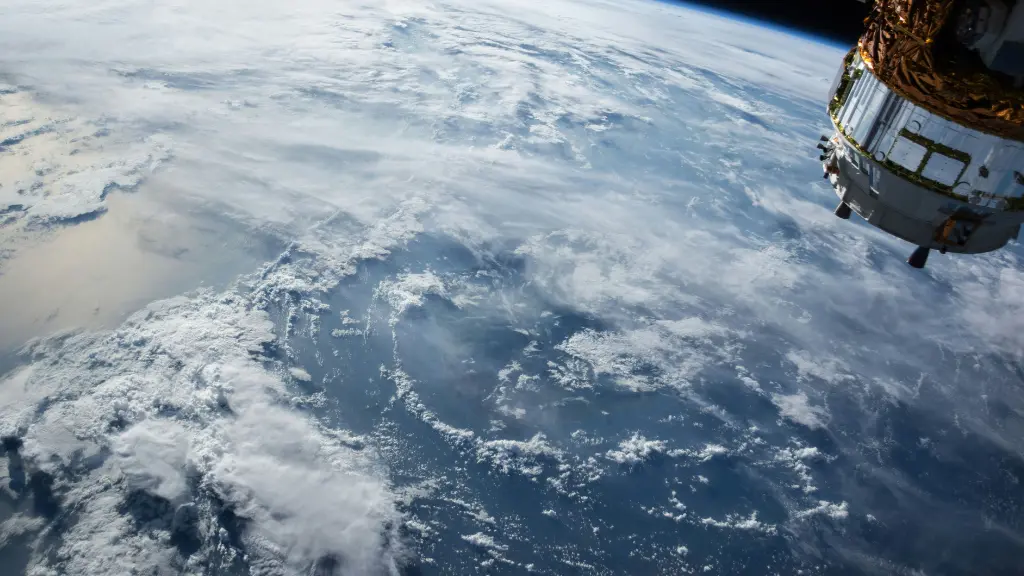

Ядро Землі - це захоплююча та загадкова частина нашої планети. Як самий центр в земне ядро, він відіграє вирішальну роль у загальній структурі та поведінці планети. Ядро складається з двох окремих частин: внутрішнього ядра та зовнішнього ядра.
Внутрішнє ядро - це тверда сфера, що складається із заліза та нікелю, діаметром приблизно 1200 кілометрів. Він оточений зовнішнім ядром, яке являє собою шар розплавленого металу товщиною близько 2300 кілометрів. Разом ці два шари складають приблизно 15% від загального об’єму Землі. Ядро також неймовірно гаряче, температура в центрі досягає 6000 градусів за Цельсієм.
Вчені десятиліттями вивчають ядро Землі, але ще багато чого залишається невідомим. Однак останні досягнення в галузі технологій дозволили дослідникам краще зрозуміти цей загадковий регіон. У цій статті я детальніше досліджу ядро Землі, включаючи його склад, поведінку та роль, яку воно відіграє у формуванні нашої планети.

Ядро Землі — це центральна частина нашої планети, розташована під мантією та корою. Він розділений на два шари: тверде внутрішнє ядро та рідке зовнішнє ядро. Склад ядра Землі є предметом великого інтересу для вчених, оскільки він допомагає нам зрозуміти формування та еволюцію нашої планети.
Вважається, що хімічний склад ядра Землі складається переважно з заліза (Fe) і нікелю (Ni). Ці елементи складають більше 80% маси ядра з меншою кількістю інших елементів, таких як сірка (S), кисень (O) і кремній (Si). Точний склад ядра важко визначити, оскільки його неможливо безпосередньо спостерігати. Проте вчені змогли зробити висновки про склад ядра на основі сейсмічних даних і експериментів.
Вважається, що тверде внутрішнє ядро Землі складається переважно із заліза з меншою кількістю нікелю та інших елементів. За оцінками, його радіус становить приблизно 1220 кілометрів, а температура – близько 5000 градусів за Цельсієм. Незважаючи на високу температуру, внутрішнє ядро залишається твердим через величезний тиск, під яким воно знаходиться.
Рідке зовнішнє ядро земного ядра також переважно складається із заліза та нікелю, але воно також містить легші елементи, такі як сірка та кисень. За оцінками, його товщина становить приблизно 2300 кілометрів, а температура – близько 4000 градусів за Цельсієм. Магнітне поле Землі, яке захищає нас від небезпечного сонячного випромінювання, створюється зовнішнім ядром.
На закінчення склад в земне ядро в основному складається із заліза та нікелю з меншою кількістю інших елементів. Тверде внутрішнє ядро та рідке зовнішнє ядро відіграють важливу роль у геології Землі та полі магнітного ядра Землі. Потрібні подальші дослідження, щоб повністю зрозуміти склад і поведінку ядра Землі.

Як геофізик, мене завжди захоплювала динаміка земного ядра. Ядро — це складна система, яка складається з двох окремих шарів — внутрішнього ядра та зовнішнього ядра. У цьому розділі я досліджуватиму рух і передачу тепла в ядрі.
Ядро Землі постійно знаходиться в русі. Магнітне поле ядра Землі, яке захищає нас від небезпечного сонячного випромінювання, створюється зовнішнім ядром. Рух зовнішнього ядра приводиться в дію теплом, що виділяється внутрішнім ядром, і охолодженням зовнішнього ядра у верхній частині. Цей рух відомий як конвекція.
Обертання Землі також відіграє ключову роль у русі ядра. Ефект Коріоліса змушує конвекційні потоки обертатися за годинниковою стрілкою в північній півкулі та проти годинникової стрілки в південній півкулі. Це обертання створює ефект динамо, який створює магнітне поле Землі.
Внутрішнє ядро, з іншого боку, обертається незалежно від зовнішнього ядра. Обертання внутрішнього ядра відбувається трохи швидше, ніж обертання поверхні Землі, завершуючи повний оберт кожні 24 години. Це обертання генерує невелику кількість енергії, яка, як вважають, відповідає за підтримку магнітного поля ядра.
Ядро науки про Землю надзвичайно спекотне, температура піднімається до 6000 градусів за Цельсієм. Тепло утворюється в результаті розпаду радіоактивних ізотопів і залишкового тепла від формування Землі. Потім тепло передається від внутрішнього ядра до зовнішнього через провідність.
Охолодження зовнішнього ядра у верхній частині створює температурний градієнт, який керує конвекційними потоками. Коли гарячий матеріал піднімається, він охолоджується і опускається назад, створюючи безперервний цикл теплопередачі.
Підсумовуючи, динаміка ядра Землі є складною системою рухів і теплопередачі. Рухи ядра обумовлені конвекцією та обертанням Землі, тоді як тепло утворюється в результаті розпаду радіоактивних ізотопів і залишкового тепла від формування Землі. Розуміння динаміки ядра має вирішальне значення для розуміння магнітного поля Землі та процесів, які формують нашу планету.

Як учений про Землю, я вважаю вивчення магнітного поля Землі захоплюючим. Магнітне поле є важливим аспектом нашої планети і відіграє вирішальну роль у нашому повсякденному житті. У цьому розділі я обговорю роль ядра Землі у створенні та підтримці магнітного поля.
Магнітне поле Землі виникає внаслідок руху розплавленого заліза всередині зовнішнього ядра. Зовнішнє ядро - це шар рідкого заліза, який оточує тверде внутрішнє ядро. Рух розплавленого заліза створює електричні струми, які, у свою чергу, створюють магнітне поле.
Магнітне поле не є статичним, а навпаки, постійно змінюється. Магнітні полюси можуть з часом рухатися і навіть змінювати полярність. Ці зміни зумовлені складною динамікою ядра Землі та його взаємодією з мантією та корою.
Геомагнітні інверсії є найбільш драматичними змінами в магнітному полі Землі. Під час інверсії магнітне поле слабшає, і магнітні полюси міняються місцями. Останній розворот стався приблизно 780 000 років тому, і вчені все ще намагаються зрозуміти механізми, які викликають ці розвороти.
Одна з теорій полягає в тому, що розвороти викликані змінами в потоці розплавленого заліза в зовнішньому ядрі. Коли потік змінюється, магнітне поле слабшає і, зрештою, змінюється. Інша теорія полягає в тому, що зміни викликані взаємодією між ядром і мантією.
Підсумовуючи, магнітне поле земного ядра є складною та динамічною системою, яка створюється та підтримується рухом розплавленого заліза у зовнішньому ядрі. Магнітне поле відіграє вирішальну роль у нашому повсякденному житті, від орієнтування компасів до захисту нас від шкідливого сонячного випромінювання. Розуміння ролі ядра в магнетизмі Землі є важливою сферою дослідження для вчених Землі.

Як учений про Землю, я вважаю вивчення земного ядра захоплюючим. Ядро Землі — це найвнутрішніша частина нашої планети, яка складається з твердого внутрішнього ядра та рідкого зовнішнього ядра. Ядро становить близько 15% об'єму Землі і 32% її маси. Незважаючи на свою важливість, вивчення ядра Землі є складним завданням через його важкодоступність.
Одним із основних методів дослідження земного ядра є аналіз сейсмічних хвиль. Сейсмічні хвилі - це хвилі енергії, які проходять через надра Землі, і вони можуть надати цінну інформацію про властивості ядра Землі. Аналізуючи час проходження та амплітуди сейсмічних хвиль, вчені можуть зробити висновок про щільність, температуру та склад ядра Землі.
Інший метод, який використовується для вивчення земного ядра, — це обчислювальне моделювання. Це передбачає використання комп’ютерних моделей для моделювання поведінки ядра Землі за різних умов. Змінюючи такі параметри, як температура, тиск і склад, вчені можуть отримати уявлення про динаміку ядра Землі та про те, як воно впливає на магнітне поле Землі.
На завершення можна сказати, що вивчення земного ядра є складним і складним завданням, яке вимагає використання багатьох методів і технік. Завдяки аналізу сейсмічних хвиль і комп’ютерному моделюванню вчені краще розуміють ядро Землі та його роль у формуванні планети, на якій ми живемо.

Як людина, яка вивчала земне ядро, я можу впевнено сказати, що ядро є однією з найцікавіших і найважливіших частин нашої планети. Він розташований у самому центрі Землі і складається з двох ядер у земних шарах: внутрішнього ядра та зовнішнього ядра.
Межа між ядром Землі та мантією відома як межа ядро-мантія. Він розташований приблизно на 2900 кілометрах нижче поверхні Землі. Межа відзначається різким збільшенням щільності і зміною поведінки сейсмічних хвиль, які проходять через неї.
Межа ядро-мантія є дуже важливою областю дослідження для геологів і сейсмологів. Вважається, що кордон відіграє вирішальну роль у русі тектонічних плит і формуванні вулканічної активності. Кордон також вважається відповідальним за створення магнітного поля Землі.
Взаємодія між ядром і корою також дуже важлива. Тепло земного ядра керує рухом тектонічних плит, що, у свою чергу, формує поверхню Землі. Ядро також відіграє важливу роль у формуванні гір, оскільки рух тектонічних плит може призвести до викривлення та згортання кори.
Крім того, магнітне поле земного ядра відповідає за захист Землі від шкідливого впливу сонячного вітру та космічного випромінювання. Без цього магнітного поля життя на Землі було б набагато складнішим, якщо не неможливим.
Загалом земне ядро є важливою частиною надр Землі. Його взаємодія з мантією та корою відповідає за багато геологічних процесів, які формують нашу планету. Завдяки постійному вивченню та дослідженню ми зможемо краще зрозуміти ядро та його роль в історії та майбутньому нашої планети.

Як людина, яка вивчала ядро планети Земля, я можу впевнено сказати, що воно має значний вплив на поверхневі явища. У цьому розділі я обговорю два основні способи впливу ядра на поверхню Землі: вулканічна активність і тектонічні рухи.
Земне ядро відіграє вирішальну роль у виникненні вулканічної активності. Магма, яка є розплавленою породою, яка знаходиться під поверхнею Землі, утворюється в результаті плавлення гірських порід у мантії та корі. Це танення спричинене високими температурами та тиском, які існують глибоко всередині Землі, які в кінцевому підсумку генеруються теплом, яке виділяється ядром.
Земне ядро також впливає на склад магми. Ядро в основному складається із заліза та нікелю, і вважають, що ці елементи є джерелом заліза та нікелю, які містяться в магмі. Крім того, магнітне поле ядра може впливати на рух магми, що, у свою чергу, може впливати на розташування та інтенсивність вулканічних вивержень.
Земне ядро також відіграє значну роль у тектонічних рухах, які є рухами плит земної кори. Вважається, що тепло ядра є основним рушієм цих рухів, оскільки воно викликає конвекційні потоки в мантії. Ці течії, у свою чергу, керують рухом пластин земної кори.
Земне ядро також впливає на склад і міцність плит земної кори. Тепло, що виділяється ядром, робить породи в мантії та корі більш пластичними, що означає, що вони легше деформуються. Це може призвести до утворення розломів і тріщин в плитах кори, що в кінцевому підсумку може призвести до землетрусів.
На закінчення ядро земного ядра має значний вплив на поверхневі явища, зокрема на вулканічну активність і тектонічні рухи. Розуміння ролі ядра в цих процесах має вирішальне значення для прогнозування та пом’якшення наслідків стихійних лих, таких як виверження вулканів і землетруси.

Як геолог я вважаю земне ядро захоплюючою темою. Він впливає не лише на магнітне поле планети, а й на океани. У цьому розділі я обговорю зв’язок між ядром Землі та океанами.
Земне ядро генерує тепло, яке передається на поверхню за допомогою конвекції. Це тепло призводить до термохалінної циркуляції, яка відповідає за рух води в океанах. Термохалінна циркуляція зумовлена різницею температури та солоності, що створює градієнти щільності в океані.
Тепла вода від екватора тече до полюсів, де охолоджується й опускається на дно океану. Ця холодна вода потім тече назад до екватора, завершуючи циркуляцію. Цей процес відіграє вирішальну роль у регулюванні клімату земного ядра шляхом розподілу тепла навколо планети.
Ядро Землі також впливає на зміни рівня моря. Гравітаційне тяжіння Місяця і Сонця викликає припливи, на які можуть впливати зміни в магнітному полі Землі. Магнітне поле створюється рухом розплавленого заліза в земному ядрі, на який можуть впливати зовнішні фактори, такі як сонячні бурі.
Зміни рівня моря також можуть бути спричинені таненням льодовиків і крижаних шапок, на яке впливає ядро Землі. Танення льоду може спричинити зміни в розподілі маси на поверхні земного ядра, що може вплинути на обертання планети та гравітаційне поле.
Підсумовуючи, земне ядро відіграє значну роль у функціонуванні океанів. Термохалінна циркуляція та зміни рівня моря є лише двома прикладами складних взаємозв’язків між ядром Землі та океанами. Як геолог, я вважаю цей зв’язок захоплюючим предметом для подальшого вивчення.

Як дослідник основної науки про Землю, я в захваті від майбутніх можливостей досліджень і відкриттів. Ми все ще так багато чого не знаємо про внутрішню роботу нашої планети, і я вірю, що продовження досліджень і досліджень приведе до нових уявлень і глибшого розуміння ядра Землі.
Однією з сфер особливого інтересу є вивчення сейсмічних хвиль. Аналізуючи те, як сейсмічні хвилі проходять через земне ядро, ми можемо отримати цінну інформацію про склад і структуру ядра. Поточні дослідження в цій галузі можуть призвести до нових відкриттів щодо властивостей ядра та процесів, які відбуваються в ньому.
Іншим перспективним напрямком для майбутніх досліджень є використання комп’ютерного моделювання та симуляції. Створюючи детальні моделі земного ядра, ми можемо моделювати поведінку різних матеріалів і перевіряти різні гіпотези про процеси в ядрі. Цей підхід уже дав деякі вражаючі результати, і я вірю, що продовження інвестицій у цю сферу призведе до ще більших проривів.
Крім того, я вважаю, що можна ще багато чому навчитися з безпосереднього дослідження земного ядра. Хоча це складне завдання, з’являються нові технології та методи, які можуть зробити це можливим. Наприклад, розвиток передових методів буріння та матеріалів може дозволити нам проникнути глибше в земну кору та досягти ядра. Подібним чином прогрес у робототехніці та дистанційному зондуванні може дозволити нам досліджувати ядро, не входячи в нього фізично.

Загалом я оптимістично дивлюся в майбутнє Земне ядро наука та потенціал для нових відкриттів і уявлень. Продовжуючи інвестувати в дослідження та дослідження, ми можемо поглибити наше розуміння нашої планети та сил, які її формують. Перегляньте більше подібних статей, натиснувши тут: Коул Пармер Антилія: детальний огляд.